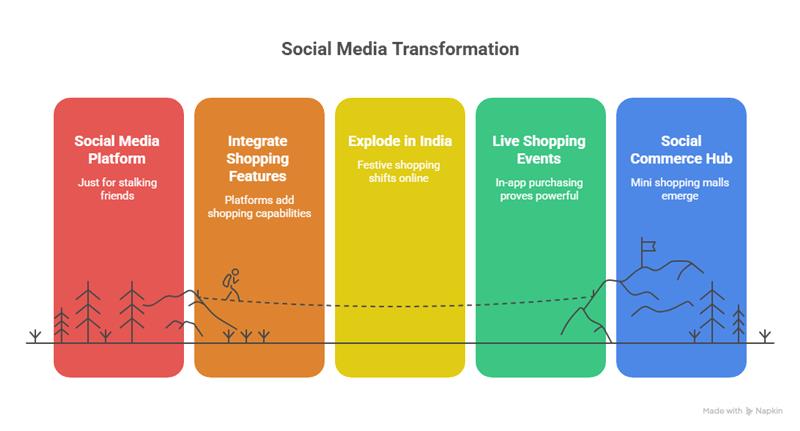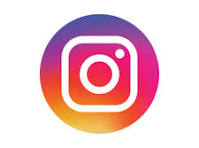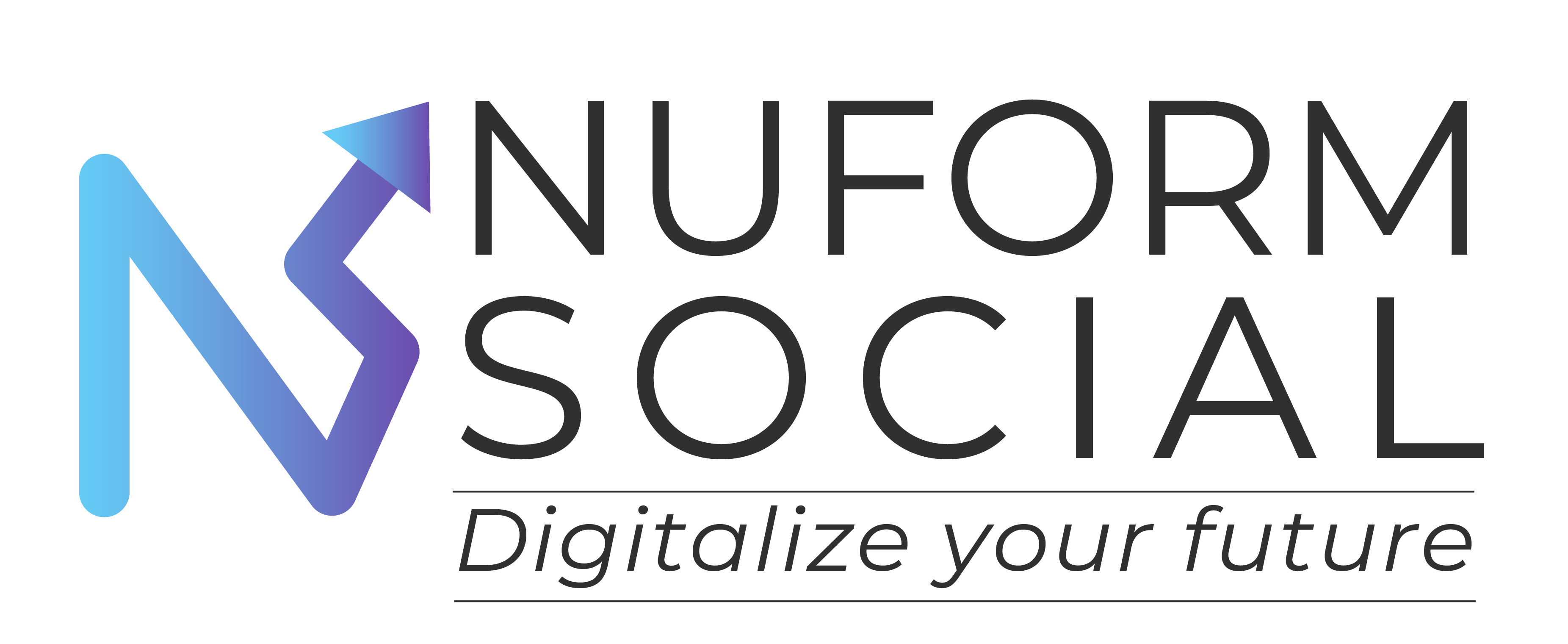What Does the Future of Social Media Marketing Look Like in 2025 and Beyond?
By Nitin Banik
Blink and the feed looks different. Yesterday it was static posts, today it’s Reels, tomorrow it might be something none of us can pronounce yet. That’s the pace we’re dealing with. Platforms don’t wait for brands to catch up, and users are even faster—they drop what’s boring and chase the next shiny thing before you’ve even written your caption.
When people talk about the future of social media marketing, they usually throw around big buzzwords. But here’s the plain truth: it’s just where attention is going next. That means less guessing and more adapting. And the future isn’t ten years away; it’s already sneaking into your feed right now.
We’re talking about AI tools shaping how brands reply, short-form video swallowing up screen time, online communities replacing the old “broadcast to everyone” model, and shopping that happens without ever leaving the app. That’s the real shift—social isn’t just where people hang out; it’s where decisions get made, wallets open, and loyalty (or frustration) forms.
So if you’re running a business or building a brand, you don’t get to sit this one out. The question is simple: will you move with the changes or get scrolled past?
Why the Future of Social Media Marketing Actually Matters
Scroll through any metro train ride in India and you’ll see the whole spectrum: a college kid laughing at a meme on Instagram, a small shop owner forwarding product videos on WhatsApp, a professional scrolling LinkedIn for “motivational” posts, and someone’s mom on YouTube Shorts figuring out a new recipe. That’s the real India feed—diverse, chaotic, but always active.
When we say “future of social media marketing,” it’s not some foreign concept. It’s right here, in the way Diwali shopping ads show up on Instagram before you even decide what sweets to buy, or how a regional influencer in Lucknow can move more product than a national TV ad.
The stakes? Massive. India has over 820 million internet users (IAMAI, 2024), and more than half are glued to social apps. That’s not just numbers; that’s every language, every region, every niche interest. And unlike the West, where one or two platforms dominate, here the future is multi-platform. People might watch a YouTube product demo, DM the seller on Instagram, then finally pay via a WhatsApp link. If your brand isn’t prepared for that zigzag journey, someone else will scoop your customer.
So the future matters because it’s already happening in smaller ways every day. The question isn’t “when will things change?” It’s: are you showing up where your audience already is?

Top Trends Defining the Future of Social Media Marketing
1. Social Commerce and Shoppable Content
Remember the days when social media was just for stalking your school crush or sharing bad selfies? Not anymore. Platforms like Instagram and Pinterest are turning into mini shopping malls. You don’t just scroll; you end up with a full cart before you even realize it.
In India, this trend has exploded. Think about festive shopping—people don’t wait to visit malls; they buy directly from reels and stories. Instagram’s shop feature makes the “see it, want it, buy it” loop dangerously short. Pinterest is catching up too, especially for home décor, weddings, and gifting ideas (basically, the desi obsession list).
Globally, live shopping events in China proved how powerful in-app purchasing can be. India isn’t far behind—YouTube live streams are already testing shopping integrations. For brands, ignoring social commerce is like saying “I’ll skip Diwali season sales.” You’ll miss the crowd where it’s buzzing.
2. AI & Automation in Social Media
Here’s the tricky part: your Instagram feed probably knows more about your mood than your best friend. Why? AI. Behind the scenes, algorithms are predicting what you’ll like, share, or buy. Brands are leaning into this with AI-powered scheduling, chatbots that reply instantly (sometimes too perfectly), and predictive analytics that whisper, “Hey, your audience is about to binge late-night scrolling—drop that reel now.”
But it’s not just about automation. It’s personalization at scale. Imagine 10,000 people seeing the same ad, but each one feels like it’s talking just to them. That’s AI-powered magic.
The catch? Machines are great at data, but humans still win at creativity. A meme about monsoon traffic in Mumbai will hit harder if it’s written by someone who’s actually sat in that traffic jam, not a bot. The future will be a dance between efficiency (AI) and empathy (humans).
3. Short-Form Video & Storytelling
Let’s be real: no one has the patience for 10-minute brand videos anymore. If you can’t grab attention in the first five seconds, you’re just background noise. That’s why Reels and YouTube Shorts are ruling the game.
In India, short-form video isn’t just entertainment—it’s how people learn, shop, and laugh through the day. A street food seller can get millions of views overnight, and a small business can go viral with one clever reel.
The smarter brands are treating these videos like serialized stories. Instead of one-off ads, they build mini-series: “Episode 1: Why your chai tastes bad,” followed by “Episode 2: Fix it with our masala blend.” This “edutainment” approach makes people stick around, not just scroll past.
4. Augmented Reality, VR & Immersive Experiences
If you’ve ever tried an AR filter that gave you glowing skin or put a turban on your head, you know it’s silly… but you also shared it, didn’t you? That’s the hook. Brands are using AR try-ons for everything—lipsticks, sunglasses, even furniture. Why? Because trying before buying (without moving from your couch) feels magical.
VR and the whole metaverse hype may feel far off, but early adopters are experimenting. Imagine entering a virtual wedding expo, walking through a digital mandap, and buying outfits on the spot. Too futuristic? Maybe. But AR and VR experiences are building engagement that plain text posts never could.
If you’re a brand, dabbling early in these spaces could set you apart—before everyone else rushes in.
5. Influencer Marketing 2.0: The Creator Economy
Gone are the days when one Bollywood celebrity posted a generic ad and everyone rushed to buy. Today, a micro-influencer with 20,000 followers in Indore can sell more sarees than a celebrity post ever will. Why? Trust.
This is influencer marketing 2.0—the creator economy. People want authenticity, not glossy brand-speak. Long-term partnerships with creators who actually believe in your product resonate far more than one-off paid collabs.
Plus, creators themselves are evolving. They’re not just relying on brand deals—they’re monetizing through subscriptions, affiliate links, and community memberships. For brands, the smart move is building real relationships with creators, treating them as partners rather than billboards.
6. Private Communities & Niche Platforms
Here’s the underrated trend: people are tired of screaming into the noisy void of big social media. Instead, they’re forming smaller, private communities where they can actually connect. Think WhatsApp Channels, Discord groups, and even Slack spaces.
In India, WhatsApp dominates this scene. From stock market tips to bhajan groups, everything runs on WhatsApp. For marketers, this means shifting from chasing viral reach to building loyalty inside closed circles.
It’s not about how many followers you have anymore—it’s about how engaged your tribe is. A community of 2,000 dedicated fans will always beat 200,000 silent followers. Brands that crack this will see real loyalty, not just likes.
How Brands Can Prepare for the Future

Invest in Storytelling & Authentic Content
Let’s be real—no one opens Instagram hoping to see another “20% OFF” banner. People follow stories, not ads. Brands that win tomorrow will be the ones who figure out how to tell human-first stories that hit emotions. Think about Wendy’s snarky Twitter comebacks or Duolingo’s hilarious mascot stunts—those aren’t just campaigns, they’re personalities people actually remember. In India, Zomato nails this daily. Their push notifications feel like that witty friend who just gets you. The future of social media marketing will reward this kind of raw voice over polished “corporate speak.” Storytelling doesn’t mean a long novel—it could be a 15-second reel that makes you laugh or a customer testimonial that feels painfully relatable. The point is: humans before hashtags.
Adopt an Experimentation Mindset
The platforms change faster than a Mumbai local train schedule, and clinging to one format is risky. Just ask the brands who put all their eggs in Facebook Pages and then watched reach collapse. The smarter move is to treat social features like test labs. Pilot-test new tools—whether that’s Instagram Broadcast Channels or LinkedIn collaborative articles. Some will flop, some will fly, but the learning curve keeps your brand agile. The worst thing you can do is play “wait and watch” while competitors already figure out the playground. Experiment small, measure quick, and scale only what clicks with your audience.
Balance Organic + Paid Strategies
Paid ads aren’t going away, but depending on them like oxygen is dangerous. Organic presence builds trust—people still check your page before buying, and an empty feed screams “red flag.” On the flip side, smart ad spend helps you cut through the clutter. The trick is balance: build consistent organic value through reels, carousels, and genuine posts, while using precision-targeted ads to amplify the right ones. Tools like social listening can help find what your audience is already buzzing about, so you don’t just shout into the void. Think of it as cricket: organic is your defense, ads are your boundaries.
Build Communities, Not Just Audiences
Big follower counts don’t equal loyalty. A thousand passive likes mean less than fifty people who actively talk about your brand in a WhatsApp group. That’s the real future: small, tight-knit communities where your brand isn’t a billboard but a participant. Whether it’s a members-only forum, Discord server, or even gated Telegram updates, audiences who feel seen are far more likely to advocate. Followers scroll; communities stick.
Future Challenges in Social Media Marketing
If social media marketing feels a bit like running on a treadmill that never slows down, you’re not alone. One big challenge ahead is platform fatigue—audiences are tired of seeing the same polished posts everywhere. The endless scroll is making users picky, and oversaturation means even great content risks being ignored.
Then comes the algorithm roulette. One day your reel hits 50k views, the next it struggles to cross 500. Brands can’t keep betting their visibility on rules that change overnight. Overdependence on algorithms is risky; a single update can tank reach no matter how loyal your audience is.
On top of this, privacy regulations like GDPR and CCPA are rewriting how marketers can collect and use data. India too is tightening up with the Digital Personal Data Protection Act, meaning hyper-targeting without consent is a big no-no.
And let’s not forget the ethics debate around AI and data usage. Sure, AI helps automate, but when personalization feels like surveillance, trust drops fast.
The message is clear: the future won’t just reward creativity—it’ll test transparency, adaptability, and respect for user trust. Those who prepare now won’t just survive; they’ll lead.
10 FAQs on the Future of Social Media Marketing
1. What does the future of social media marketing look like in 2025?
Lorem ipsum dolor sit amet, consectetBy 2025, social media will feel less like billboards and more like marketplaces + communities. Expect Instagram and YouTube to double down on shopping, while WhatsApp Channels gain momentum in India. Brands that adapt fast—experimenting with commerce, storytelling, and niche groups—will stay visible. Slow movers? They’ll look outdated overnight. ur adipiscing elit. Ut elit tellus, luctus nec ullamcorper mattis, pulvinar dapibus leo.
2. Will influencer marketing still matter in the future?
Yes, but not in the “celebrity endorsement” sense. The real power lies with micro and nano creators—those folks with 5,000 to 50,000 followers who feel like trusted friends. In India, regional creators are already driving purchase decisions in Tier 2 and Tier 3 cities. Future influencer marketing will be credibility > follower counts.
3. How will AI change the future of social media marketing?
AI will quietly run the background—predicting user behavior, auto-scheduling posts, even drafting captions. But creativity won’t vanish. Think of AI as the assistant that handles grunt work while marketers focus on storytelling and emotional hooks. In India, AI-powered tools are already helping small businesses run precision ads without hiring a big agency.
4. Is short-form video the future of social media?
Short answer: absolutely. Reels, Shorts, and snackable explainers are the backbone of discovery today. People want fast laughs, quick tips, and mini-stories. But future success won’t be about posting random clips—it’s about weaving serial storytelling. One strong narrative across multiple short videos can hook an audience better than a single glossy brand film.
5. What role will AR/VR play in future brand marketing?
AR filters and virtual try-ons are already mainstream—see beauty brands letting customers “test” lipstick shades on camera. The metaverse may not be fully here yet, but immersive shopping and gamified brand worlds are coming. Early adopters (fashion, gaming, real estate) will set the tone. For most brands, AR is a playful add-on, not core.
6. How can small businesses prepare for the future of social media marketing?
Small businesses don’t need huge budgets; they need smart storytelling and agility. Start with consistent short videos, experiment with WhatsApp marketing (huge in India), and test features early. Tools like Canva, AI schedulers, and affordable ad targeting can level the playing field. The future isn’t about who spends more—it’s who experiments smarter.
7. Will private communities replace mainstream platforms?
Not replace, but definitely complement. People are tired of noisy feeds. Niche WhatsApp groups, Discord servers, and closed Facebook communities give users a sense of belonging. For brands, these aren’t vanity-metric spaces—they’re where loyalty builds. In India, we’re seeing fitness coaches, stock traders, and even food brands run thriving private groups alongside public content.
8. What are the biggest challenges for the future of social media marketing?
The main hurdles: platform fatigue, oversaturation, algorithm roulette, and stricter privacy laws. One day your reach peaks, the next it’s gone. Add rising ad costs and trust issues with AI-generated content. Brands that rely only on algorithms will struggle. The safer bet? Community-building, diversified platforms, and owning your audience data (email lists still matter).
9. How will data privacy laws shape future strategies?
Regulations like GDPR, CCPA, and India’s DPDP Act will force marketers to rethink targeting. Forget sneaky data grabs—consent and transparency will be non-negotiable. This means first-party data (surveys, loyalty programs, sign-ups) will be gold. Future campaigns will reward brands that openly say, “Here’s why we’re asking for your info, and here’s what you get.”
10. What should marketers do now to future-proof their social media strategy?
Future-proofing isn’t about chasing every shiny tool—it’s about balance. Invest in storytelling, keep experimenting with new features, split focus between organic and paid, and build owned communities. Also, have a “test fund” for pilots (like live shopping or AR campaigns). The brands that treat social as a lab, not a lottery, will thrive.
Conclusion
The future of social media marketing isn’t some distant event—it’s already unfolding under our noses. Features change, platforms pivot, and user behavior evolves faster than most marketers can update their playbooks.
Success won’t come from copying yesterday’s tactics. It’ll come from adaptability and creativity—brands that experiment, tell stories with heart, and build real connections will stay ahead.
Let’s be honest: platforms shift faster than new iPhone launches (and that’s saying something). Blink too long, and your campaign may already look outdated.
In social media, there’s no such thing as “fashionably late.” Here, late = invisible.
Stop scrolling and Start scaling.
The future of social media marketing isn’t coming, it’s already here.
Call Nuform today and let’s turn your brand from “just another post” into the one everyone’s talking about.
Stay connected for more insights, strategies, and campaign ideas:
 Instagram: NuformSocial
Instagram: NuformSocial
 Facebook: NuformSocial
Facebook: NuformSocial
 Pinterest: NuformSocial
Pinterest: NuformSocial
 YouTube: NuformSocial
YouTube: NuformSocial
 LinkedIn: NuformSocial
LinkedIn: NuformSocial
 Twitter (X): Nuform_Social
Twitter (X): Nuform_Social


